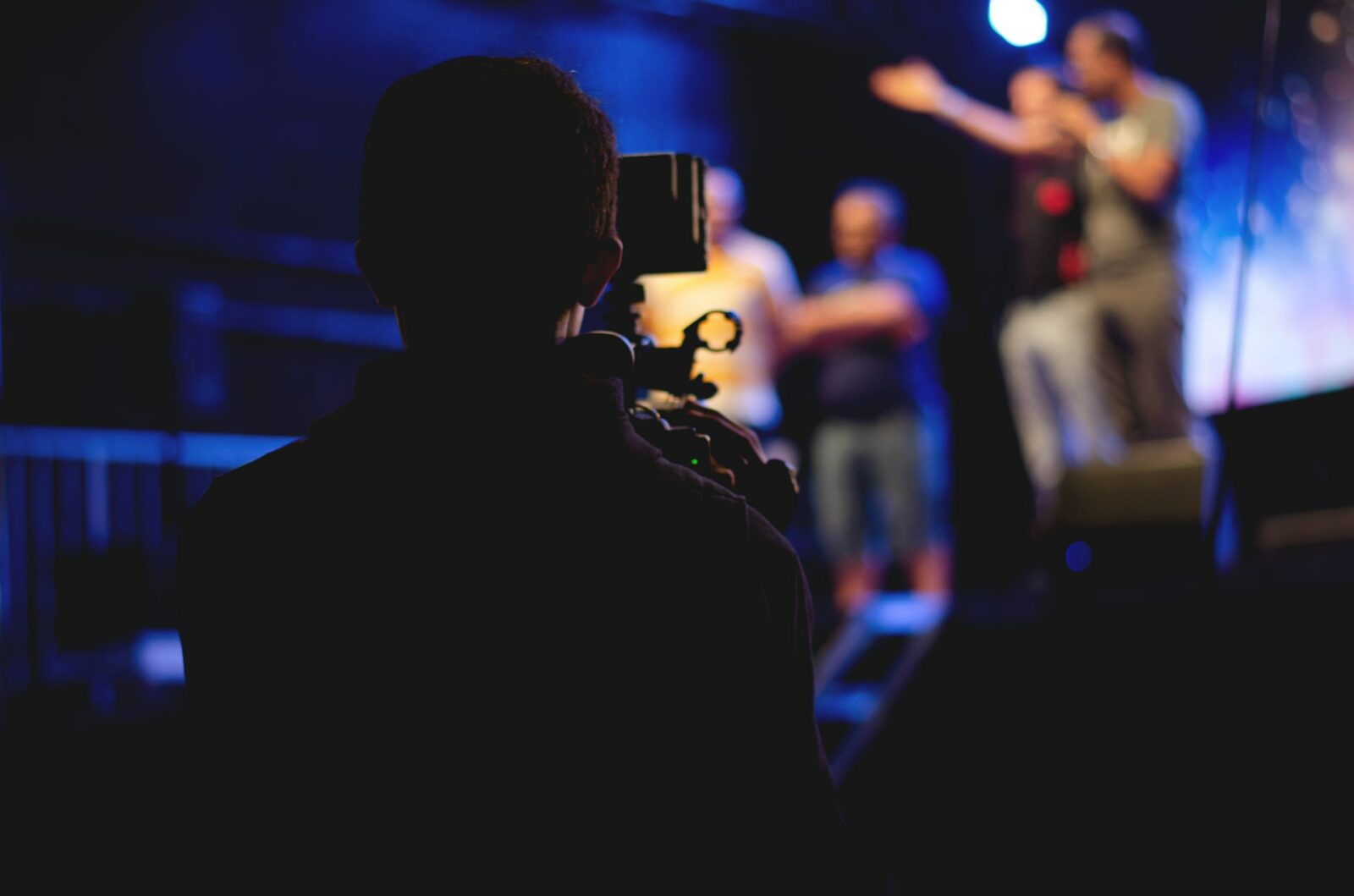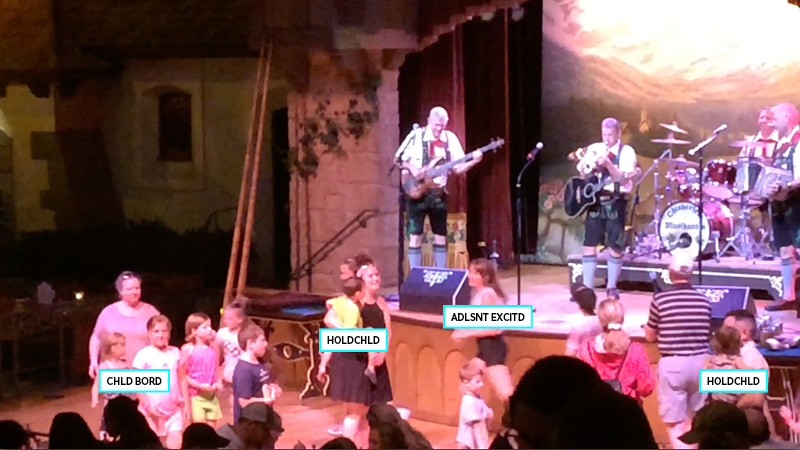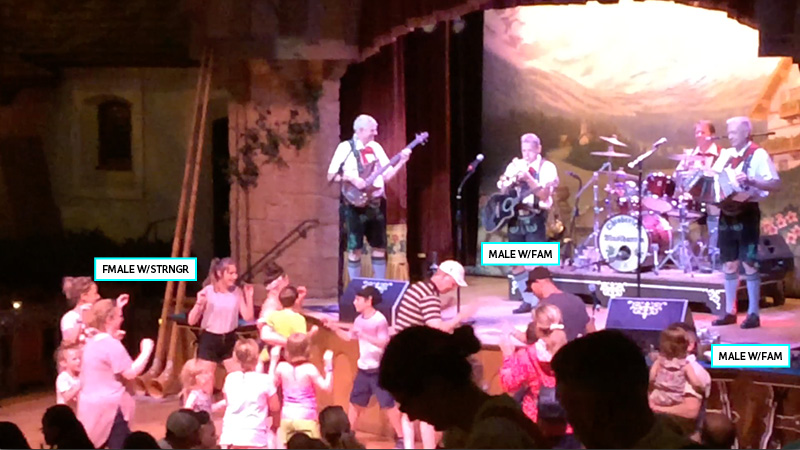
Video can be a powerful tool for documenting research because it captures images, movement, sound, and lighting. However, simultaneous content can be difficult content to code. For example, this video was taken at the Biergarten Restaurant in the Epcot Germany pavilion Walt Disney World features dancing kids and adults, polka music, theatrical lighting, and other activities in both the foreground and the background. There is a lot going on here.
There are many techniques for dealing with video content. No matter the technique being used, timestamps allow researchers to precisely document moments in time when events of interest took place.
The images below capture a few moments from the Biergarten video. Screenshots like these are coded much like images from field notes or observations:
0:18 Timestamp
- FMALE: Female
- MALE: Male
- W/STRNGR: With Stranger (staying close to people they did not seem to know/did not sit at the same table)
- W/FAM: With Family (staying close only to family or people they seemed to be related to)

0:29 Timestamp
- CHLD: Child
- BORD: Bored (facial expressions and body language that is disengaged)
- HOLDCHLD: Holding a child
- ADLSNT: An adolescent aged person
- EXCITD: Excited (facial expressions and body language that is full of energy)

1:04 Timestamp
- No new codes

If we were to observe guests at Biergarten over many different meals, we may start to see patterns and themes. For example, one discovery could be that men typically prefer to dance with their kids or close family while women are more open to dancing as a group. We could also discover that people prefer to hold their children below a certain age. Themes like these capture preferences for which design decisions can be made.
Pro Tip
Codes and trends don’t always reveal themselves on the first pass. Go through data more than once to affirm the codes you developed or determine if some were just outliers and should be ignored.